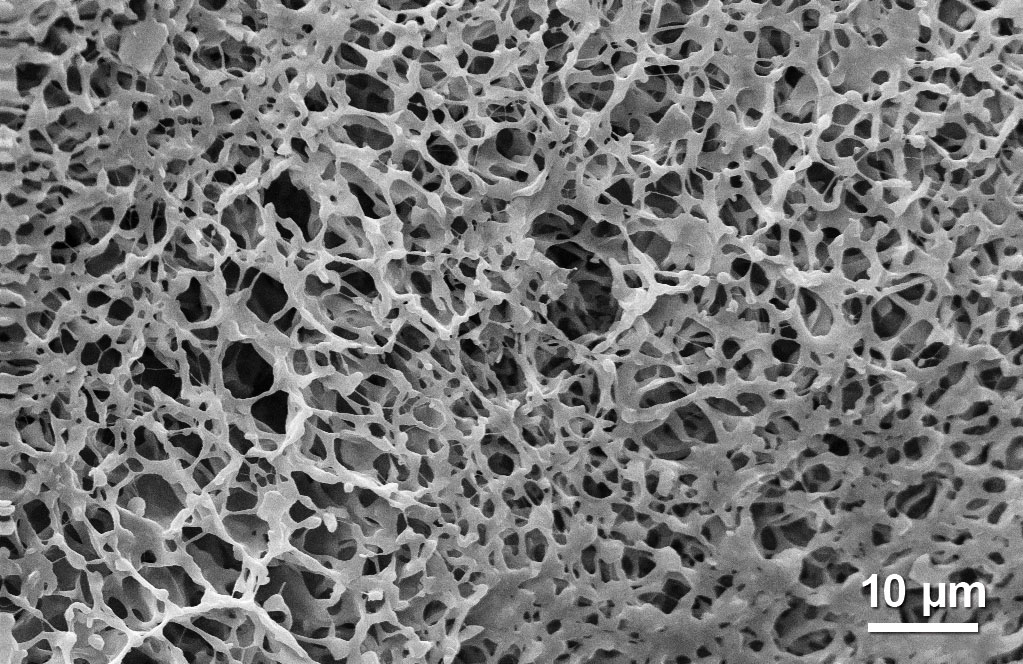Credit:
Advitiya Kumar
This lightweight, cellulose-based material pockmarked with teeny-tiny holes comes from the lab of Advitiya Kumar, a research fellow at the Indian Institute of Technology, New Delhi.
Kumar makes the materials using a method known as high internal phase emulsion (HIPE) polymerization. Like most emulsions, HIPEs consist of a water phase and an oil phase. The oil phase contains cellulose-based monomers and cross-linkers. Tiny drops of the water phase are dispersed in the oil phase with the help of surfactants. What sets these HIPEs apart is that the water phase takes up over 74% of the volume in the solution. When Kumar polymerizes the monomers, they essentially create a solid in the HIPE’s oil phase, leaving behind lots of little pores where all the water droplets were trapped. This technique enables Kumar to precisely control how large the pores are and how they’re distributed within the material. The scaffolds have a myriad of potential uses, including separations and removing pollutants from water.
Submitted by Advitiya Kumar
Do science. Take pictures. Win money. Enter our photo contest.
See more Chemistry in Pictures.
Chemical & Engineering News
ISSN 0009-2347
Copyright ©
2025 American Chemical Society
